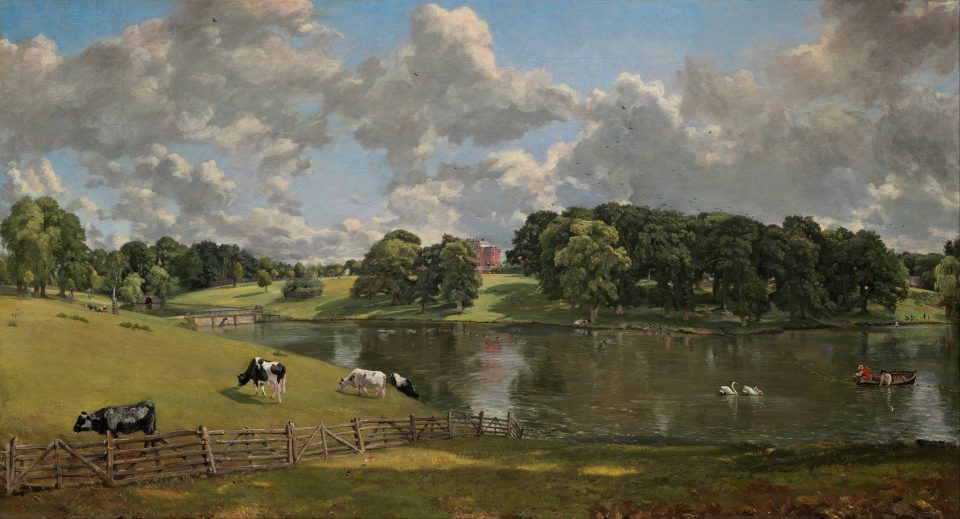John Constable (1736-1837) is one of the best-known of English landscape painters, He was born in Suffolk into a prosperous family in the corn merchant and milling business. Constable was expected to take over the flourishing business, but his younger brother stepped up to this role, leaving Constable to pursue his love of painting.
As a young man, Constable took frequent excursions into the countryside of Suffolk and Essex to paint and sketch. He maintained a love for this part of the world throughout his career. He brought a warmth of feeling and a concern for realism to his work, which distinguished it from the more romanticised landscape paintings of his contemporaries. He was inspired by the ordinary in everyday life, “the sound of water escaping from mill dams…willows, old rotten planks, slimy posts, and brickwork, I love such things.”
His landscapes are full of light, fresh colour and lively texture. He rebelled against the use of the imagination or artistic formulas in constructing landscapes, preferring to observe and paint nature closely. “The world is wide”, he wrote, “no two days are alike, nor even two hours; neither were there ever two leaves of a tree alike since the creation of all the world; and the genuine productions of art, like those of nature, are all distinct from each other.”
However, despite his innovative and modern techniques, and the great fame his works enjoy today, in his lifetime he was not successful in England, although his work sold much better in France. To make ends meet, he took up portraiture, and although he found the medium dull, he produced many fine portraits. At 40, he married Maria Elizabeth Bicknell and they lived happily for 12 years during which time Maria gave birth to seven children. Tragically, Maria died of tuberculosis in 1828 at the age of 41, leaving Constable broken-hearted, and dressing in black for the rest of his life.
Wivenhoe Park is home to Wivenhoe House, built around 1759. In 1816, owner Major-General Francis Slater Rebow commissioned Constable to paint the house and park. The Major-General is famed for returning from the Peninsula Wars (1808-1814, during which Britain and Spain fought against Napoleon’s armies in Portugal and Spain) with two cork oak cuttings in his boots. These trees still stand in the park today. Wivenhoe House is now part of the University of Essex.

